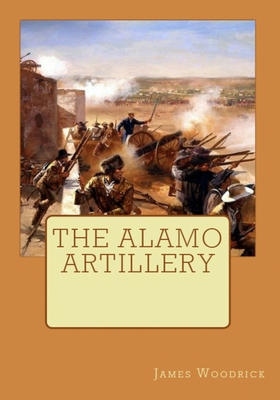The Alamo Artillery: Also Including Goliad, Gonzales and San Jacinto

The Alamo Artillery: Also Including Goliad, Gonzales and San Jacinto
The Alamo Eighteen Pounder. Come and Take It. Phrases without context to outsiders, but not to Texans. These revered, iconic cannons played an outsized role in the creation of the Republic of Texas in 1835 and 1836. Many historians have spent countless hours researching the Alamo artillery to determine what was used in the battle, where they were deployed, and what happened to them after the battle. In some cases the archival record is reasonably clear; in others it is not. The origins of these cannons and their path through Texas history is revealed here for the first time, pieced together from a combination of archival records, accounts of participants, published books and articles, and studies and opinions of professional and avocational historians.The Alamo artillery remaining in San Antonio today has a fascinating history before its use in that fateful battle in 1836. Some of the cannons hark from the Spanish Colonial period, and were made in Mexico. Two of them go all the way back to the early days of the French fort at Natchitoches, Louisiana. And perhaps most interesting of all are the five cannons that were in the fleet of a Galveston pirate in 1817, wrecked in Matagorda Bay, recovered by Spanish troops and sent to San Antonio.Twenty-four cannons were present in the Alamo during the battle on March 6, 1836. Three were removed from San Antonio in May, 1836 by the departing Mexican army, were taken to Matamoros and are lost. Twenty-one of them were buried by Mexican forces before they departed; thirteen were later rediscovered by Sam Maverick in 1852, five by Maverick descendants in 1908 and three by others. Of these, thirteen remain and are on display in San Antonio today. This book reveals their fascinating history. A description of the artillery and its history used at Goliad, Gonzales and San Jacinto is also included.
PRP: 77.50 Lei
Acesta este Prețul Recomandat de Producător. Prețul de vânzare al produsului este afișat mai jos.
69.75Lei
69.75Lei
77.50 LeiIndisponibil
Descrierea produsului
The Alamo Eighteen Pounder. Come and Take It. Phrases without context to outsiders, but not to Texans. These revered, iconic cannons played an outsized role in the creation of the Republic of Texas in 1835 and 1836. Many historians have spent countless hours researching the Alamo artillery to determine what was used in the battle, where they were deployed, and what happened to them after the battle. In some cases the archival record is reasonably clear; in others it is not. The origins of these cannons and their path through Texas history is revealed here for the first time, pieced together from a combination of archival records, accounts of participants, published books and articles, and studies and opinions of professional and avocational historians.The Alamo artillery remaining in San Antonio today has a fascinating history before its use in that fateful battle in 1836. Some of the cannons hark from the Spanish Colonial period, and were made in Mexico. Two of them go all the way back to the early days of the French fort at Natchitoches, Louisiana. And perhaps most interesting of all are the five cannons that were in the fleet of a Galveston pirate in 1817, wrecked in Matagorda Bay, recovered by Spanish troops and sent to San Antonio.Twenty-four cannons were present in the Alamo during the battle on March 6, 1836. Three were removed from San Antonio in May, 1836 by the departing Mexican army, were taken to Matamoros and are lost. Twenty-one of them were buried by Mexican forces before they departed; thirteen were later rediscovered by Sam Maverick in 1852, five by Maverick descendants in 1908 and three by others. Of these, thirteen remain and are on display in San Antonio today. This book reveals their fascinating history. A description of the artillery and its history used at Goliad, Gonzales and San Jacinto is also included.
Detaliile produsului










